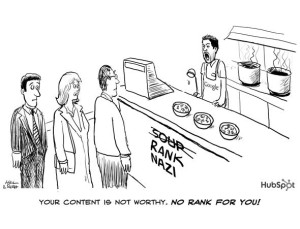 Yesterday I participated in the American Society of Journalists and Authors monthly call where the gracious host, Nancy Faass, asked me all about how Geoff Livingston and I marketed Marketing in the Round.
Yesterday I participated in the American Society of Journalists and Authors monthly call where the gracious host, Nancy Faass, asked me all about how Geoff Livingston and I marketed Marketing in the Round.
During the call, she asked me what one of my first assignments was as a young professional.
I told the story of how I learned about my job by reading the copies of the clips I was making color copies of day after day, but she pushed a little bit further to get me to walk down memory lane.
What came out surprised me. It was a memory I’d forgotten about. Not intentionally, but just something I hadn’t thought about in a long time.
You remember the Franklin Covey planners? We all carried them around (this, of course, was before electronic calendars and task lists) and they were certainly all the rage.
Well, I worked on the Bayer CropScience account and, specifically, my job was to work with potato growers across the United States.
I was tasked with interviewing them every month to write a newsletter that told their stories. We were tasked to create compelling content before content was a thing.
The Bayer Potato Planner
As I did these interviews, I discovered most of the growers couldn’t keep track of when they were supposed to spray for weeds or insects or fungus and I heard the complaint over and over again: Bayer has all these products, but I have no idea when I’m supposed to use them.
So, after lots of brainstorming and strategy development with my bosses and the client, the potato planner was born.
In it, we highlighted the dates the potato growers needed to remember for certain Bayer products, but we also included interviews, stories, and testimonials from their peers.
It was a really fun project to work on, but it also won many awards because it sold products without being blatant about it.
The growers loved getting their planners every year and they soon became a staple on farms throughout the country.
I tell this story mostly as a trip down memory lane, but also because we all talk about content day in and day out and we forget about the basics that make us really good at telling stories.
Create Compelling Content
Chuck Kent talked about this a bit in his guest post yesterday, and there is a formula to create compelling content we like to use internally.
We stole pieces of this from Jay Baer and added some of our own. It goes a little something like this:
- Your customers and your employees tell your best stories. Harvest them, feed them, grow them, and tell them (staying with the grower theme). I like to tell the story of a business owner I met in Omaha last year. As I worked with him, I discovered he has a very unique business model. He only hires blind people, which is an interesting story in and of itself. But as I dug more, I discovered some of those employees have done amazing things such as climb Mt. Hood unassisted or sing gospel at the highest echelons of the industry. These are great stories to tell.
- Stories humanize the company. We all know people buy from people. They don’t buy from companies or logos. They buy from people they like and trust. But you work for a company. How do you create the human element so people want to buy from you? You tell stories, just like we did with the potato growers. Zappos, of course, is the master at this. If you haven’t already read Delivering Happiness, pick it up. It’ll help you figure out how to tell stories through your content.
- Humanization creates kinship. Once, of course, the company has become human and there are real people working there, people clamor to work with you or buy from you. If you’re perceived as one of the best in the industry, they’ll even pay a premium. We’ve done this for Arment Dietrich through content and social media. It provides an opportunity to no longer have to compete for business. We’re typically the only ones invited to a pitch.
- Kinship drives purchase. And when we’re the only ones invited to a pitch, we win the business 99.9 percent of the time. There is always that small chance the chemistry won’t be great or the assignment won’t fit our bailiwick, but we almost always get the business.
- Purchase creates more customer and employees. Then you have more customers, which typically drives hiring and both of those things create more stories for you to tell.
I’m a big fan of how Marcus Sheridan recommends writing content around the questions your customers and prospects ask; that approach works really well.
But don’t ignore the stories you can tell by having your customers and employees talk about the product, the service, or the organization. That’s when you’ll hit pay dirt because you won’t sound like all of your competitors.
No one has the same stories you have.
Thanks to Hubspot for the hilarious image.